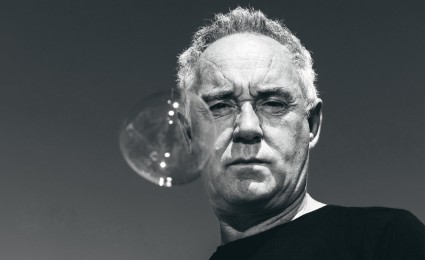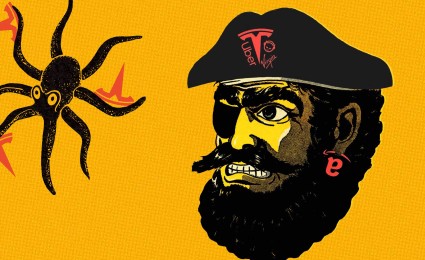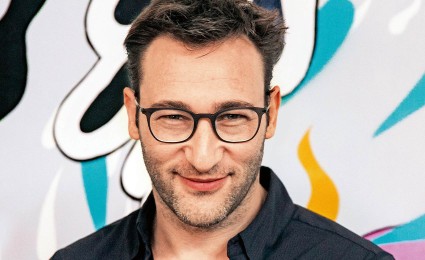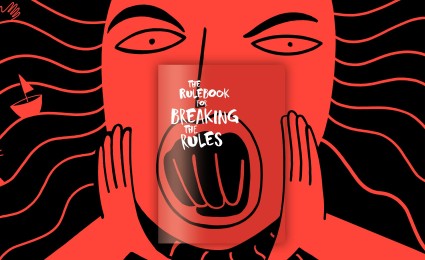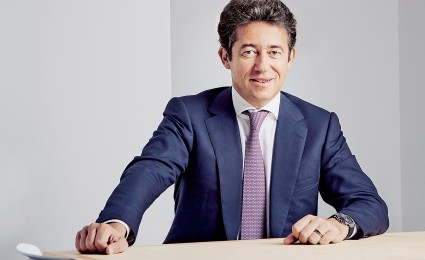Is breaking the rules a crucial skill? We examine how people who have acted against rules significantly shaped the world of business.


Think:Act magazine "Breaking the rules"
The underused power of catalytic questions

Think:Act Magazine
Hal Gregersen speaks to Think:Act about how better questioning skills will yield better answers
by Neelima Mahajan
illustrations by Jeanne Detallante
Read more about the topic "Breaking the rules"
When we talk of innovation our first instinct is to start looking for out-of-the-box ideas and solutions. That might be the wrong starting point, argues innovation and leadership guru Hal Gregersen. Begin with the questions instead.
How is it that one creates an organization that's truly innovative? How do you make sure that innovation occurs, not in occasional bursts, but consistently? Hal Gregersen, a professor at MIT's Sloan School of Management, thinks that in our search for innovation, the biggest mistake we make is to start by looking for answers, the dazzling, out-of-the-box solutions that no one could ever imagine. He believes we must step back and examine the questions that launch these innovation quests: Are they the right questions? Or are there better questions to ask? By asking better questions, we can come up with a better problem to solve and a better solution. As kids, we have this ability to ask questions, but over time our institutions and societal conditioning snuff it out. In this interview, Gregersen, who just wrote a book titled "Questions Are the Answer", talks of ways to bring back our curious instincts.
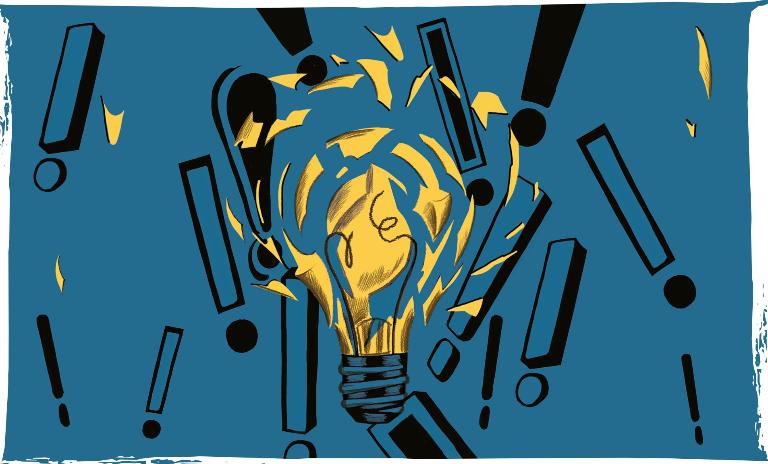
Think:Act: When we talk of innovation the instinctive thing is to look for the solutions first. Why did you focus more on looking for better questions instead of the answers?
Hal Gregersen: For 30 years I studied leadership in all kinds of contexts. The consistent theme across all the research projects is, at the very core all these people who are exceptional at [innovation] were equally exceptional at asking what I would call a catalytic question. They were always on the hunt for questions that literally challenge or break down an assumption that's limiting a system. The question becomes so powerful that it's energizing and it moves them and others to a better place. These leaders knew that the answers matter, but they also grasped through their own experience that getting the question right was the fastest way to get the answer right.
In your book you talk about an executive in Singapore who said to you, "I got to the top because I always had the right answers, and suddenly I discovered that it's not about the answers. It's about asking the right questions." A lot of leaders don't have those skills instinctively. How should they hone them?
There are two ways. One, to be aware that the organizations they're a part of might actually be limiting their questioning capacity. And most organizations are hiring people, especially at a junior level, because they have the right answers. They can drop them into a slot. They can immediately solve a problem and fill a cog in a machine. That's different if you're at a place like Amazon where they're hiring people not only to solve problems today, but to be problem solvers and finders to figure out what would be an even better problem to be solving than the one that I've thrown at you. So part of it is just stepping back enough in order to realize, am I in a context or organization that is actually fostering me going to the edge of my knowledge base, my learning, what I know and what I don't know? And do they actually support that kind of activity? If they don't, then I've got to figure out: how do I ask the better question?
I've asked this question to thousands of leaders over the last couple of years: "Does asking questions matter?" And everybody nods their heads, of course it does. But then I ask, "How do you ask the right questions, how do you formulate the better or catalytic question?" Then I invite them to tell the person next to them, "What's your answer? If they were a new employee working with you, how would you explain to them how to ask better questions?" And 98% of the time, people are stumped: they know asking questions matters, but they don't know how to teach anybody else to do it.
Michael Sippey, VP of Product at Medium, put it quite straightforward: "Put yourself in situations that cause you to ask straight questions." What settings, what people might I put myself in front of, or in the middle of, that would literally force me, almost, to be a little bit wrong about something and if I'm a little bit wrong, it might be uncomfortable, and the situation might even force me to be quiet, to be reflective, to rethink and ultimately reframe the way I'm looking at a situation? As a result, a new question emerges that gets me closer to a better answer.
That's the process. And it's a bit counterintuitive for most leaders who are answer-driven, to step back and think "How might I feel wrong enough, uncomfortable enough and quiet enough for the right question to surface to open up a completely new answer I haven't considered?"
Most organizations encourage employees to "color within the lines", and don't expect them to do anything beyond their job description. In these organizations, people who constantly ask questions can be seen as irritants. How should that be changed?
My starting point for any leader is try to identify a problem or an opportunity that you don't have an answer to, but you're completely committed to figuring out what might be the better answer. I invite them onto a question excursion to figure out what's the better question to be asking here. It's an odd starting point, perhaps, but if I'm in an organization that's shutting down this kind of inquiry, the first thing I would do is step up and step out into the world and try to fully immerse myself in the end user or customer experience. To be there, physically present, to know what's working, what's not, and why. That's the story of Fadi Ghandour, the founder of Aramex, the logistics company. Its whole purpose is how to get things from point A to B at the right time, in the right place.
"Most systems are outright toxic when it comes to asking catalytic questions or wanting to challenge the status quo."
It's all operational efficiency. [When Fadi] drops into Dubai at 2 o'clock in the morning, instead of taking a limousine to get to the hotel, he asks an Aramex delivery truck driver to pick him up. On the way to the hotel, Fadi asks questions and he's very quiet after he asks them, to get new data that otherwise he wouldn't get. That opens up that there are operational challenges in that region.
If I were running a team at the lower level of an organization but perhaps they're not supportive of inquiry and trying to challenge the status quo, I would take a very strategic approach: "Okay, we're at this part of the organization, we are trying to do something better for the end user, the customer, and here's how we're gonna go about doing it."
How do you go about establishing an environment that's conducive to questioning? Is it something that should evolve organically, or is it something that you can create and change behaviors?
My response to that would be this method called the question burst. It's inviting a group of people around you to collectively set aside some dedicated time to ask nothing but questions about an opportunity or challenge you really care about. The two rules that must be followed for it to work are you, for a certain period of time, say four minutes, only ask questions about the challenge, no answers, no explanations as to why you're asking the question, and if a person or group does that for four minutes, they'll get about 20 questions.
Especially in an environment where questions don't count, doing a question burst with a small group of people is a starting point. It signals to other people, "I am vulnerable, I don't know everything, but I'm deeply committed to getting to the roots of this opportunity or challenge."
That may seem like a management gimmick. I get that. I tell that to people when I just want to get through to them. But I also note from the data that 80% of the time that people follow those two rules, in a short period of time, they'll feel better about their challenge, they will have slightly reframed the challenge, they will have received at least one good idea to potentially solve their challenge and they'll have a question that's so compelling that they get out and try to find a better answer to it that moves them forward.
Oddly enough, that simple exercise also can be incredibly threatening, in an environment or culture where we're not used to challenging the status quo or we're not used to seeking the truth. My invitation to leaders is signal to the world around you that you care enough about a problem to really do something about it, signal that you don't have the answer, and invite others to ask questions to you about it. It actually starts opening up a more candor-filled, trust-based conversation than they would otherwise have.
Finding solutions through a question burst process can be very exciting. But there would be setbacks as well. Returning to ask more questions can be frustrating and the process can seem like a never-ending series of changing goalposts. How should you keep the momentum going?
I often ask leaders, "How many of you know somebody who asks the doubting questions?" And everybody knows somebody. Then I ask, "What would be the one word you would use to describe those people?" And almost 80% of the time and more the one word is 'annoying'.
I would say to leaders, "Are those people who asked the doubting questions still annoying if they're willing to take responsibility for answering the questions they ask?" And when you ask that question, most leaders are like, "No, they are not annoying anymore." They might be challenging, but not annoying. I'm not an advocate of asking questions for the sake of asking questions.
I care about responsible questioning where I care enough about the system, its impacts, the people and the consumers that I am going to probe deeply about how we might do things better out there. That's gonna unearth things that are going to make me and others quite uncomfortable probably. But I don't care about that, because I'm here to figure out what's working, what the truth of the situation is, and if we do that, we are far more likely to make progress and be something better. That's where questioning who's responsible actually creates progress, and when we have progress, people don't see the question as nearly as annoying.
For an organization that's in a state of business as usual, encountering no major disruptions, how important is it to revisit questions meaningfully over time, and without getting blinded by the very obvious answers?
Stewart Brand, who coined the term "personal computer" decades ago, told me about the way in which he asks the better question: "Every day I wake up and ask myself how many things am I dead wrong about." He's systematically trying to find situations that would prove him wrong, not right. Clay Christensen put it really well in saying that so many leaders have data actively pushed at them, especially senior leaders, and that data is pushed by systems that are built around somebody else's questions and they're just trying to get answers to that. But the key to figuring out what we don't know that we don't know, and the key to disruptive innovation is actually actively seeking passive data, and that's what we're talking about. It's the kind of data that does not walk through our door, so we have to get out of our door to get it.
At Salesforce, Marc Benioff systematically walks around [the company], and walks around the world, without other people surrounding him. He's putting himself in situations where passive data he otherwise wouldn't get would come to him. And it's not only physically walking around to do that, but they have an airing of grievances, a chat section in their Chatter area within Salesforce, where people talk about the real issues, and Mark Benioff is often on that, exploring, understanding and interacting with the real issues and opportunities in the system.
At Cirque Du Soleil, they have the 'Lion's Den' before a show goes live, to get all the final tweaks and challenges worked out. It's a place for people to ask tough questions and make that show better. It's very similar at Pixar where it's either a brain trust at Pixar, or a story trust at Disney, where directors of movies, come into a room, purposely knowing that for the next three hours, they will get nothing but difficult, mostly constructive, this-is-what's-wrong-with-the-movie feedback, as they start to build from a movie that sucks early on to one that's a blockbuster by the end.
So one of the really interesting questions for any organization is: where is the place that the toughest questions get raised and created? The most innovative organizations in the world actually have a sense of where those places are, and they intentionally create that.
As individuals, we don't like uncertainty. We would like to be comfortable and know that we have all the answers. But questions are all about uncertainty. How should we get comfortable with that?
For people who feel a need to stay in that zone of success, certainty, and comfort my invitation is to ask them to consider a challenge that they're actually stuck on. My invitation, in terms of moving to a more uncertain space, could be at a simple individual level, doing a question burst alone when no one else sees what I'm doing. Option B would be, invite one or two really trusted other people, whom I don't feel that vulnerable around, to explore this opportunity and challenge with me in that question burst method. It feels like it's forced, but it actually can happen quite naturally.
It's basically making the point that if you can create better conditions, where you're likely to be just a little bit wrong and uncomfortable, and maybe a little more quiet than usual and reflective, those are the kinds of situations that can actually help you make progress on the challenge. Either this more artificial question burst method or its behavioral analog in everyday life, which is I'm just gonna put myself in a situation where I'm gonna get more uncomfortable: with people not like me and in places that are not part of my routine.
As individuals, a lot of us build a body of experiences, and end up with very dominant perspectives. How should we knowingly distance ourselves from our dominant perspective and see something from perspectives we wouldn't otherwise be able to explore?
A tragic example is Travis Kalanick, the former CEO of Uber, who gets into an Uber car, and towards the end of the drive, it's being recorded unbeknownst to Kalanick, the driver starts complaining about issues related to the organization. Instead of being quiet, reflectively listening, Kalanick is on a defensive attack mode. Then you end up going viral and it's the beginning of the end of him having that role at Uber. Ultimately, he got fired. When I move into situations, I need to say to myself, what surprises, what's new, what's different here? I'm inviting myself to have that beginner's mindset, to be wrong about something. It's the starting point.
And that's the passive data. It's having that kind of mindset that enables us to figure out what we're wrong about, what we didn't know we didn't know, before it's too late. [Some leaders] simply go out of their way during their day and week to be in that active receiving mode of passive data that would upend their mental model. That's how Jeff Wilke, CEO of Amazon Consumer Worldwide, described it to me: "I'm aware that I've got a mental model. I'm pretty aware of what it is, and I'm pretty confident that there are a lot of pieces to it that are just dead wrong." For him, either through crucible career experiences or everyday interactions, he is constantly trying to revise that mental model. It is something that he is consciously, actively trying to do.
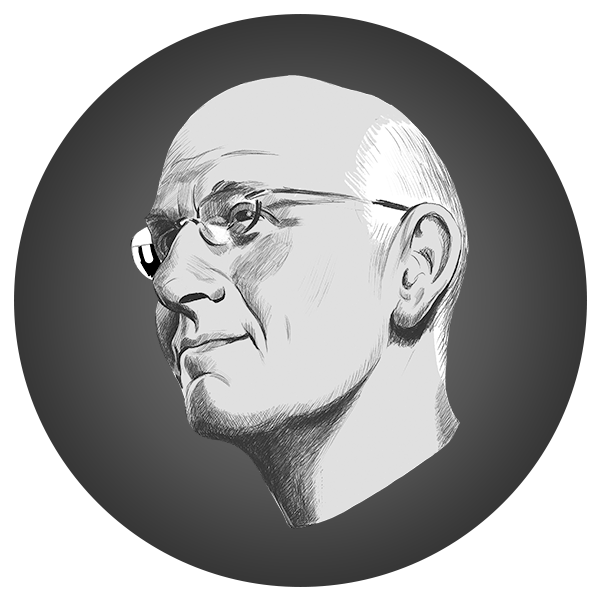
As children we are inherently curious and question everything, but as we grow up, that changes. How can we counter the influences that kill our ability to question things?
Number one, be aware that most systems are outright toxic when it comes to asking catalytic questions or wanting to challenge the status quo. The school systems in the US systematically shut down questions. The average child sitting in the class between the ages of six and even 21 years old in college, ask, on average, one question about the content they're learning. It's abysmal. The teacher sitting in that same class during the hour asks 50 to 100 questions, and it's all about students giving memorized rote answers back to the teachers so they can move on to the next thing that they're trying to solve. By the time most people get out of school in most schooling systems, they're set up to give answers and they're hired to give answers by companies that unfortunately operate in a very similar way.
Often those early jobs we have, we're expected to simply do our jobs and not ask and expose false assumptions and make things better around here. So part of it's just being aware of what's going on, and then, either individually for myself, or if I'm a parent or grandparent of children around me, it's actively inviting them to be project-focused in the work they're doing, whether it be in school or at work. What's the project you're working on? What's the problem you're trying to solve? What's the opportunity you're trying to take advantage of?
The learning is all rotated around, the project, the challenge. That kind of learning approach or work approach invites questions instead of shuts them down.
The full interview is only available in the online version of the Think:Act Magazine.


Breaking the rules
![{[downloads[language].preview]}](https://www.rolandberger.com/publications/publication_image/Think_Act_Magazine_Breaking_the_rules_Cover_download_preview.jpg)
Is breaking the rules a crucial skill? We examine how the people who have made their own rules also significantly shaped the world of business.
Curious about the contents of our newest Think:Act magazine? Receive your very own copy by signing up now! Subscribe here to receive our Think:Act magazine and the latest news from Roland Berger.







